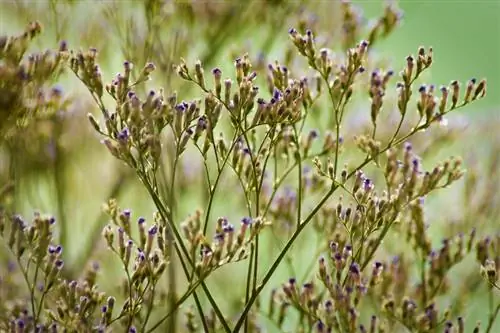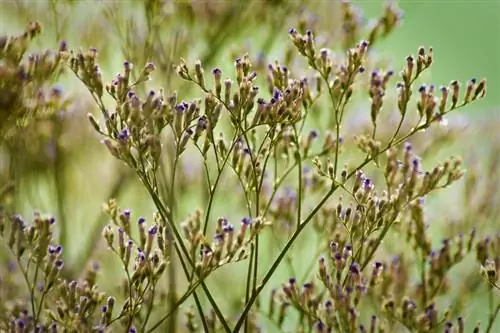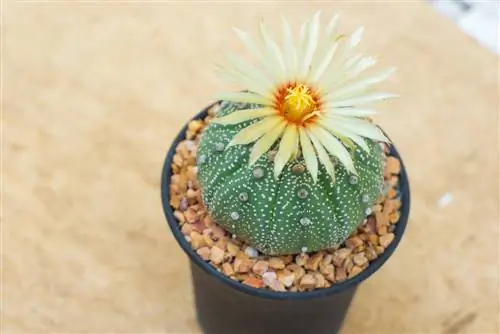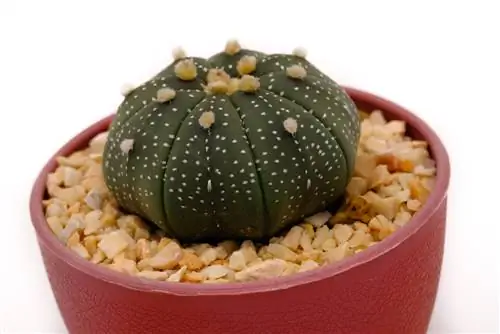- Author admin [email protected].
- Public 2023-12-16 16:46.
- Last modified 2025-01-23 11:20.
The various sea lavender species from the genus Limonium are often referred to as Widerstoss or sea lavender in German-speaking countries; the latter name refers to the natural distribution areas near the coast. The perennial plant not only finds a secure hold on sand dunes with its taproot, but can also be planted in poor and sunny locations in the garden.

Is the sea lavender hardy and how do I care for it in winter?
Sea lilac (Limonium) is hardy and can survive temperatures down to -28 degrees Celsius. For optimal winter care, cut back sea lavender in autumn, apply a protective layer of leaves or brushwood and water occasionally during frosts.
Overwinter the sea lavender in a bucket or in an outdoor bed
With their long taproot, most members of the Limonium genus are easily winter-hardy even in the cooler areas of Central Europe if they are planted directly in the garden soil. Since the adult plants can withstand winter frosts down to minus 28 degrees, frost damage only occurs, if at all, in seedlings that are planted out too early. However, things can look a little different if the sea lavender is cultivated in a fairly small pot on the terrace. In order to get the sea lavender through the winter well in the pot, you should wrap it with an insulation layer, which can consist, for example, of the following materials:
- Jute ribbons
- Garden fleece
- Bubble Wrap
The right care before and during winter
Before winter, the above-ground parts of the sea lavender should be cut off near the ground. This autumnal pruning not only makes spring care easier, but also allows the plants to be covered with a layer of leaves or brushwood in the winter. In the case of sea lavender, this protective layer serves less as a frost protection and more as a barrier against excessive winter moisture. If there are persistent frosts in winter, occasional watering on frost-free days is recommended to avoid drought damage.
Get the beach lilac off to a good start into the new growing season
After winter, depending on the weather, you should remove the protective layer of leaves above the sea lavender in good time so that mold does not form underneath due to the warming rays of the spring sun. If the limonium was cut back in the fall, no other care measures are required other than fertilization. The budding will be particularly strong if you give the sea lavender a complete fertilizer in April.
Tip
Immediately after hibernation, you can propagate the sea lilac using root cuttings, which you cut off, each about 5 centimeters long, in March from a mother plant that is at least 3 years old. In a pot with a sand and soil mixture, the root cuttings grow into strong young plants within a few weeks, which can be transplanted to a new location in the same year.






